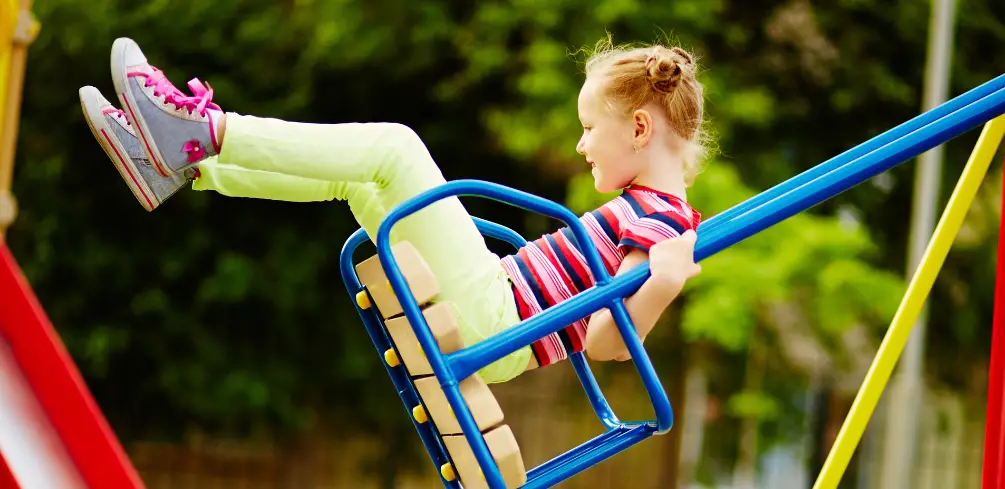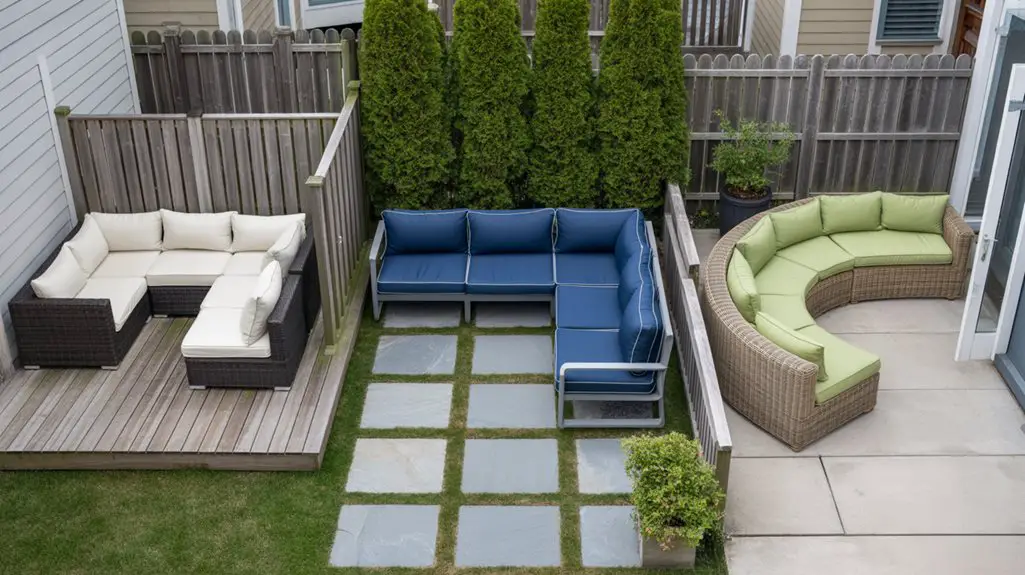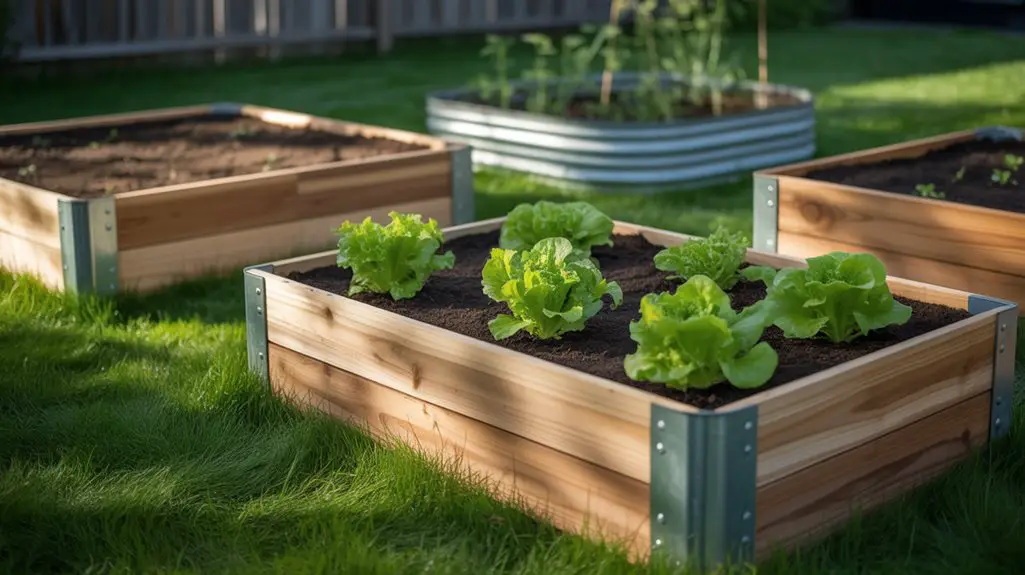Ever wondered what goes under a swing set?
It’s more than just an afterthought. This often-overlooked detail can make a world of difference in ensuring the safety, comfort, and durability of your child’s play area.
When choosing the right ground cover, it’s not only about aesthetics; it’s also about cushioning falls and minimizing injuries. From natural materials like sand or wood chips to synthetic options such as rubber mulch or mats, each choice carries its own set of benefits and drawbacks.
Consider maintenance requirements, too; some materials may require frequent top-ups, while others might withstand weather changes better.
Key Takeaways
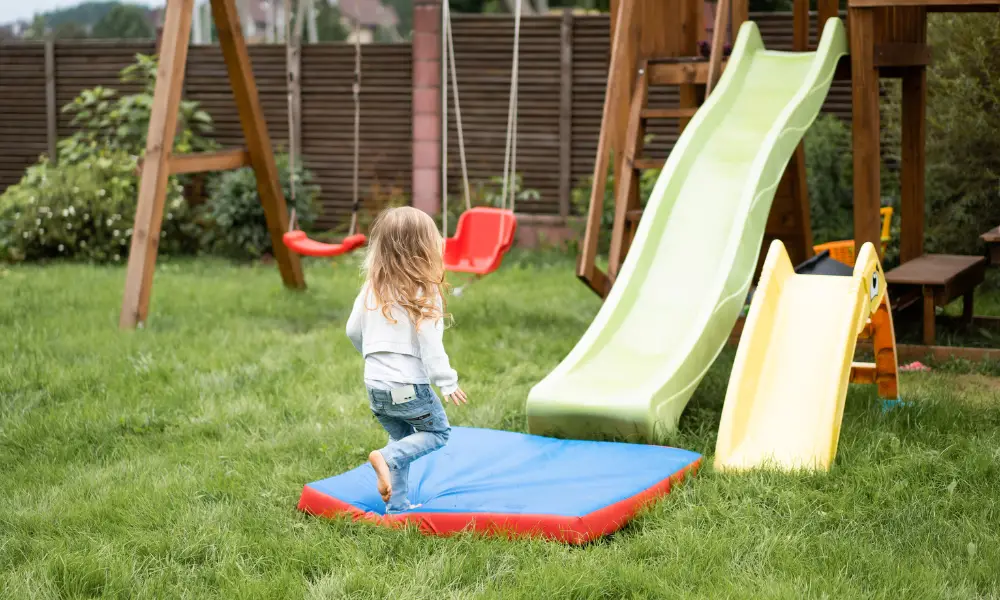
- The ground cover under a swing set is crucial for safety, comfort, and durability.
- Different materials have their own benefits and drawbacks, so it’s important to consider factors like maintenance requirements, cost implications, and environmental impact when choosing ground cover.
- Concrete should be avoided as it can cause severe injuries if a child falls.
- Rubber mulch and interlocking rubber mats offer excellent shock absorption, while sand or wood chips require more frequent maintenance.
Importance of Choosing the Right Ground Cover
Choosing the right ground cover for your swing set isn’t just a trivial decision.
It’s crucial for safety and maintenance. So let’s delve into why it matters more than you might think.
The surface under your swing set plays a pivotal role in keeping your kids safe as they play. A hard surface like concrete can cause severe injuries if a child falls. So, ensuring you choose an absorbent material will lessen the risk of harm.
Cost implications are also important to consider when selecting ground cover. While options like rubber mulch or sand might initially seem cost-effective, consider their long-term durability and need for replacement over time. This could potentially result in higher costs than expected.
Moreover, don’t forget about the potential environmental impact when making your choice. Some materials are less eco-friendly than others because of production methods or disposal issues.
For example, rubber mulch is often made from recycled tires, which can leach chemicals into the soil.
The ideal ground cover balances safety with cost-effectiveness and environmental consciousness without sacrificing freedom to enjoy the outdoors safely and responsibly. So remember: what lies beneath your swing set plays a huge part in defining its overall benefit to you and the environment around you.
Evaluating Safety and Comfort

It’s surprising to learn that nearly 80% of playground injuries are due to falls, which highlights the importance of considering safety and comfort when selecting an appropriate ground material for your outdoor play area.
One thing you need to prioritize is injury prevention. This doesn’t mean simply watching over your kids while they play but also ensuring their play space is designed with safety in mind.
When choosing what to put under a swing set, it’s crucial to choose a material that provides both cushion from falls and comfort for play. Options like rubber mulch or interlocking rubber mats are popular as they offer excellent shock absorption properties.
Sand or wood chips can also be used; however, these require more frequent maintenance.
Your choice should be guided not just by cost considerations but also by its impact on child supervision. Materials that offer clear visibility allow you better oversight over your child’s activities without obstructing their freedom to explore and have fun.
Remember, making the right choice in ground cover means less worrying about potential accidents and more time enjoying the laughter and energy of kids at play.
Every precaution taken adds up to creating a safer playground environment for your children.
Considering Maintenance and Durability
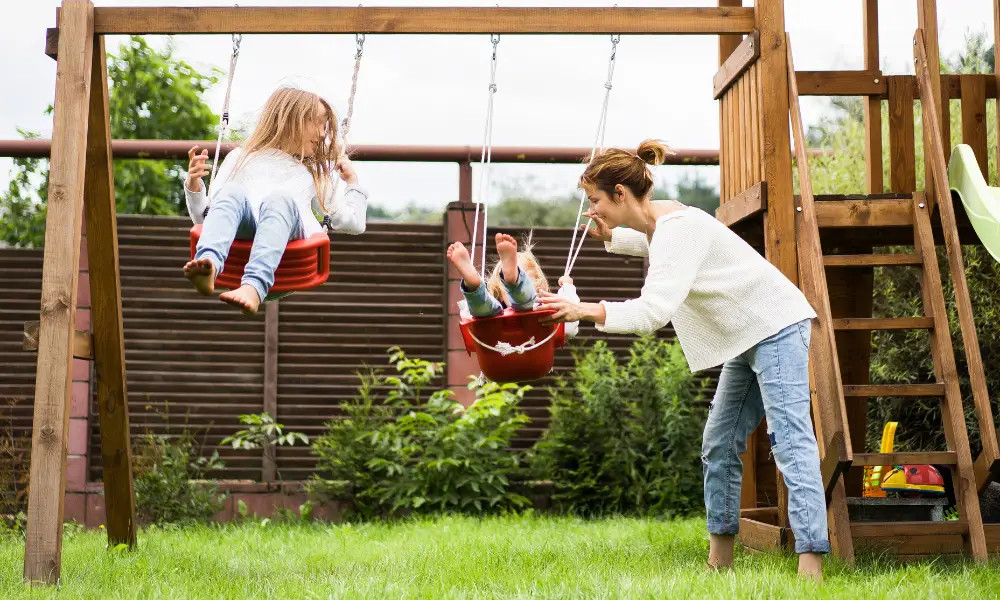
When you’re weighing your options, don’t forget to consider the long-term maintenance and durability of your playground ground cover.
It’s not just about making a safe and comfortable area for kids to play in; it’s also about ensuring that the chosen material can stand up to the rigors of time, weather, and constant use.
- Rubber Mulch: Although pricey upfront, rubber mulch requires little maintenance and is extremely durable. It’s cost-effective because of its longevity.
- Engineered Wood Fiber (EWF): EWF is easy on the wallet initially but does require periodic topping off as it decomposes over time.
- Pea Gravel: Less expensive than rubber options but more costly in terms of maintenance due to displacement by active children.
- Artificial Grass: Nearly maintenance-free after the installation process but can be pricey initially.
Remember, every option has its pros and cons when it comes to durability and upkeep, so weigh these factors against your budget before making a decision.
As you choose what goes under your swing set, remember this – a play area isn’t just an investment for fun moments today; it’s building memories for tomorrow. So make sure whatever you choose will stand the test of time while promoting safety at every step!
Using Natural Materials
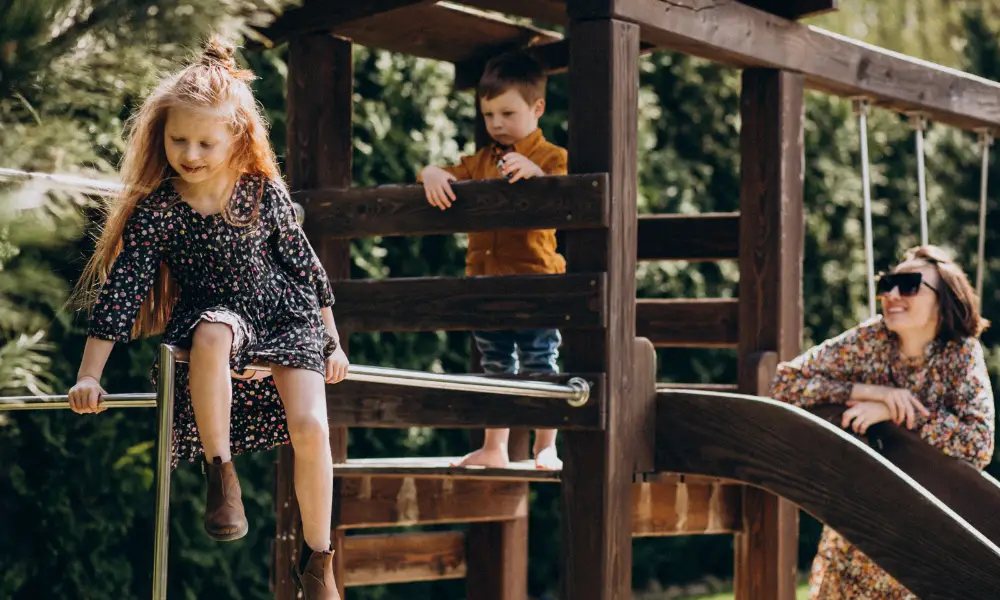
You might be wondering about the benefits of using natural materials for your playground ground cover, and indeed, there’s much to consider.
For starters, natural aesthetics are a significant advantage. Utilizing materials like wood chips or sand can bring an earthy look to your play area, harmonizing with the surrounding landscape in a way that rubber mulch or artificial turf simply can’t match.
While appearance is important, safety should always be your top concern. Thankfully, both wood chips and sand have excellent shock-absorbing properties.
They’re soft enough to cushion falls but solid enough to support active play. Plus, they don’t retain heat as synthetic materials do – a crucial factor on hot summer days.
Moving on to eco-friendly options and sustainability, these natural materials are biodegradable and renewable resources which significantly reduces their environmental impact. And if you opt for locally sourced wood chips or sand, you’ll also minimize transportation-related emissions.
Let’s not forget maintenance, either. While it’s true that natural covers need periodic topping up due to decomposition or displacement by active feet, this task can often be part of fostering children’s responsibility towards their environment.
So remember – choosing natural ground cover combines aesthetic appeal with safety features while promoting environmental stewardship.
Incorporating Synthetic Materials
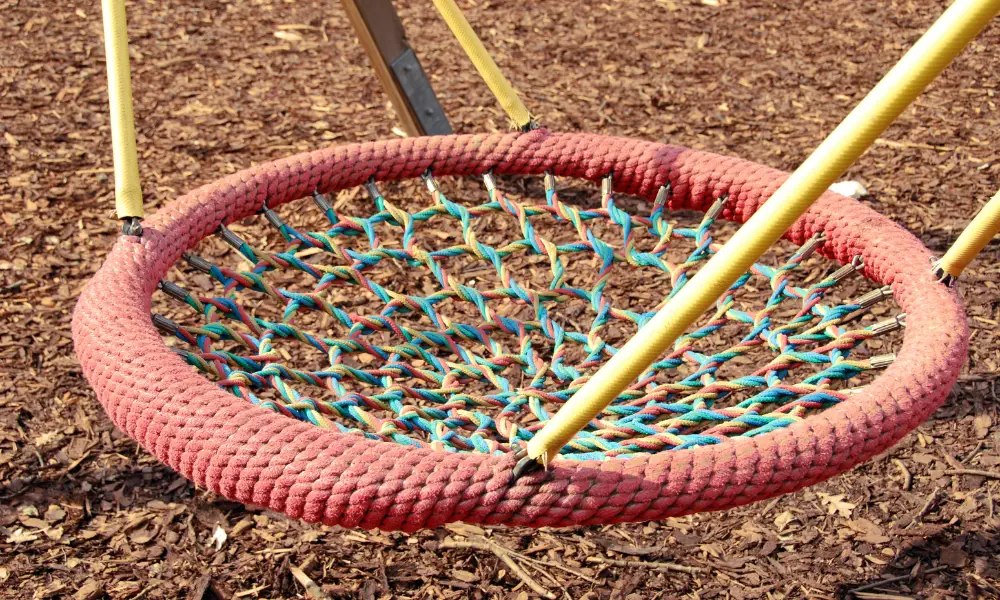
Switching gears to synthetic materials, let’s delve into the many advantages they bring to your playground design.
Not only are these materials durable and low maintenance, but they also provide a safe and fun environment for children of all ages.
Here is a table that paints a clear picture of three popular synthetic options:
| Material | Cost | Environmental Impact |
|---|---|---|
| Rubber Mulch | Medium-High | Low-Moderate |
| Synthetic Grass | High | Moderate |
| Poured-in-Place Rubber | Very High | Low |
Rubber mulch is an affordable option with reasonable environmental costs. It’s long-lasting, doesn’t splinter like wood, and provides excellent shock absorption. Synthetic grass offers a natural aesthetic without the upkeep of real grass.
However, it comes at a higher cost and has a more significant environmental impact during manufacturing. The poured-in-place rubber surfacing is the most expensive option but boasts minimal environmental impact and superior safety features.
Remember not to restrict yourself when exploring options for what to put under your swing set.
The freedom lies in choosing the material that best suits your needs and aligns with your values regarding Synthetic Material Costs and Environmental Impact.
There’s no one-size-fits-all solution; be creative while prioritizing safety above all else.
Making the Final Decision
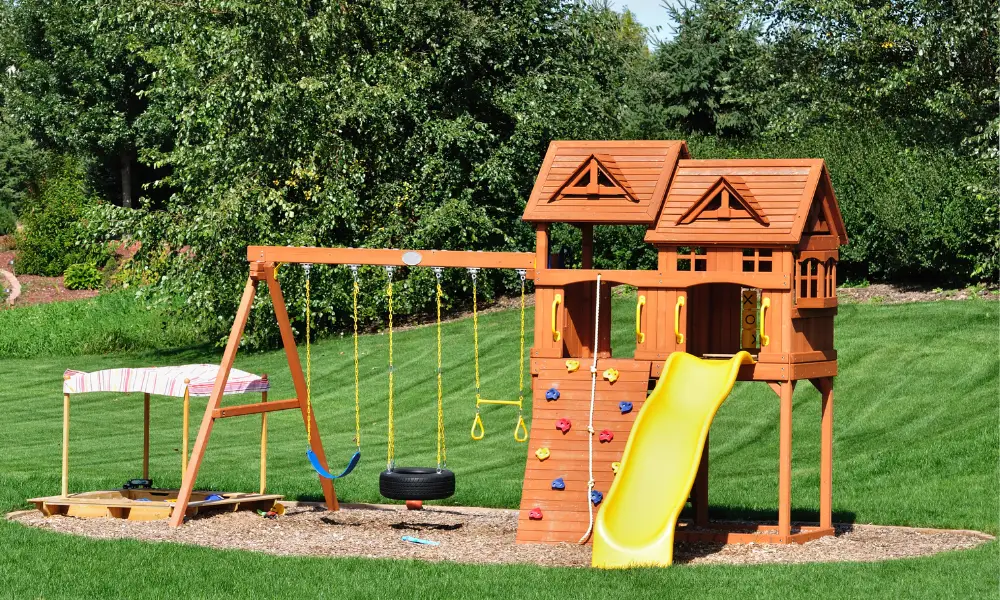
Moving on from the concept of using synthetic materials as a base for your swing set, let’s delve into the final aspect of this process – making that all-important decision.
It might seem overwhelming with all these choices and considerations but remember; you’re in control.
Making the final decision requires an overview of all factors involved. Budget considerations play a crucial role here.
Whether it be rubber mulch or engineered wood chips, keep in mind that quality shouldn’t be compromised due to cost constraints. Safety is paramount, and investing in good-quality material will ensure you don’t face any unnecessary mishaps down the line.
Furthermore, color coordination can add an aesthetic appeal to your swing set area while also fostering creativity. Choose colors that blend well with your yard or inspire joy and imagination for those who use them.
Remember, it’s not just about picking what goes under your swing set; it’s also about creating a safe, enjoyable space where freedom thrives.
So take time to analyze each option available to you carefully before making your choice because when done right, this could become a place cherished by everyone for years to come.
Conclusion
Choosing the right ground cover for your swing set can be a game-changer. Picture your kids happily swinging, their laughter filling the air, cushioned by a sea of soft wood chips or vibrant rubber mulch beneath them.
Remember, it’s not just about aesthetic appeal; safety and durability are key. Whether you choose natural or synthetic materials, ensure it offers comfort and requires low maintenance. Your careful decision will help create a safe haven for endless fun.

